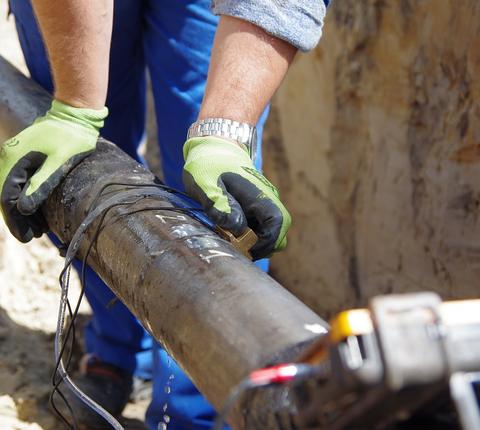Ultrasonic testing UT
This is one of the most widespread methods of non-destructive testing. This is one of the most widespread methods of non-destructive testing. Ultrasonic testing is based on the use of ultrasonic wave properties, i.e. with frequencies above 16 kHz. These tests belong to volumetric tests, which means that we detect discontinuities in the volume of a material. This method allows to detect discontinuities in a material such as: non-metallic inclusions, delamination, rolling, failures, cracks, gluing, flaws, slagging, blisters, etc.
It is also used to control the continuity of pins, bolts, etc. The UT method examines objects made of ferritic, austenitic, aluminum, magnesium, copper, copper alloys, lead, nickel, composite materials.
The great advantage of the ultrasonic method is that the results of the test are obtained immediately after the tests. It is a fast, non-invasive method that allows precise location of detected discontinuities.
The UT method allows:
- volumetric tests - detecting defects in the entire volume of the material being tested
- testing of welds, castings, forgings and sheets
- detection of non-conformities such as: non-metallic inclusions, blisters, delamination, rolling, cracks, glue fretting, sticking, slagging, blisters
- control of continuity of pins, bolts, etc., delamination, adhesion of coatings
- testing objects made of ferritic, austenitic steel, aluminum, magnesium, copper, copper alloys, lead, nickel, composite materials
- very quick evaluation of the tested components, giving the result immediately during the test
- precise determination of the size and location of localized discontinuities

